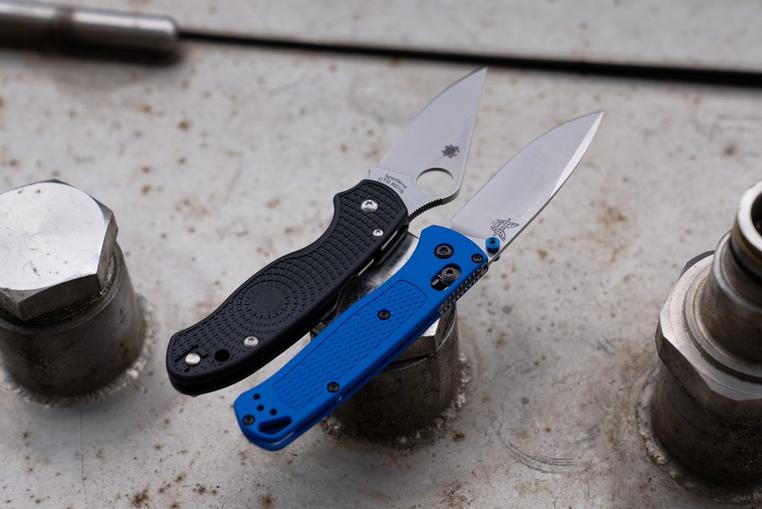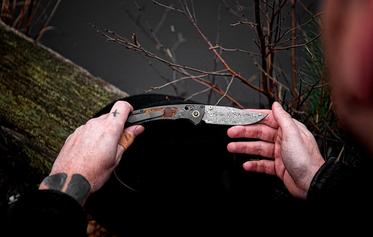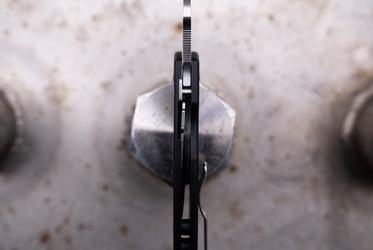Benchmade vs Spyderco
Benchmade and Spyderco: two of the largest and most prominent brands in the pocket knife world. But what are the differences between the two brands? And why would you choose one over the other? Let's get into it!
Similarities
Both brands are known for making knives that are designed to be used. Take for example the Benchmade Bugout and the Spyderco Para 3 Lightweight. Two favourites among knife enthusiasts when it comes to practical, lightweight EDC pocket knives. Almost every knife lover has had one of the two.
This is also apparent from the various collections from both brands. Both Benchmade and Spyderco have special knife collections, made for specific purposes. For example, Benchmade has the Black Class for first responders. And Spyderco has its Salt Series for maritime use. You rarely see this with other knife brands.
Designers and experts
The following applies to both brands: a large part of the range is designed by a well-known knife maker or designer. Although there is less variation at Benchmade than at Spyderco. And the designers who collaborate with Spyderco are often slightly more experimental and less well-known. A few examples: Benchmade collaborates with designers such as Mel Pardue, Warren Osborne and Shane Sibert. When you think of Spyderco, you think of designers such as Marcin Slysz, Paul Alexander and Serge Panchenko. Both brands also work in collaboration with experts, such as first responders, to achieve the best end product.
Differences between Benchmade and Spyderco
Product range
Spyderco produces many different versions of existing models. For instance, they offer different handle colours, blade finishes, edge types, steels and left-handed versions. They also work in series, where they will produce one type of knife in up to five different sizes. Benchmade does this too, but on a much smaller scale. As a result, Spyderco's range of knives is much larger than Benchmade's. As we write this topic, we currently have 300+ Spyderco knives in our range, versus 80+ Benchmade knives.
Spyderco also has its own budget line called Byrd Knives and they produce in large numbers kitchen knives and sharpening products. Spyderco also sporadically makes axes and other specialist tools. Benchmade also produces sharpening products and kitchen knives, but again: on a much smaller scale.
Country of origin
Benchmade produces knives in the United States. This is not always the case with Spyderco. Spyderco also produces knives in Taiwan, China, Japan and Italy.
Price range
For just a few tenners — not counting Byrd Knives for a moment — you can get your hands on a Spyderco knife. Benchmade knives often start at around €130/€140. This is due to the fact that Spyderco focuses on almost all price ranges and Benchmade only on the mid to premium price range. When we compare the mid-range and premium class knives of both brands, the prices do match. There isn't a huge price difference between the previously compared Benchmade Bugout and Spyderco Para 3 Lightweight.
Sprint Runs and Limited Edition knives
Benchmade has the Gold Class Series. These are the most premium Benchmade knives. Limited Editions of their most popular products, made from incredibly high-quality materials. They produce a few models of these per year. These are showcase-worthy works of art, made to be collected rather than used.
Spyderco does this a little differently. They sometimes produce a dozen Sprint Run knives per year. These are again versions of existing models with different steels and handle materials. They generally don't cost as much as a Gold Class knife from Benchmade. The materials chosen are also not always “better” or “more unique” (with exceptions) than those of the original model. First and foremost, it's a great alternative for the Spyderco fan who wants just that little bit more.
Thumb stud vs thumb hole
Benchmade knives usually have a thumb rest. Spyderco is known for its Spydie hole: a thumb hole in the blade. This is the defining feature that allows you to recognize a Spyderco. Which of the two you choose really depends on your preferences. They have basically the same functionality.
Axis lock vs compression lock
Benchmade is known and loved for its axis lock. This is a locking system that is pushed into place by two springs. Spyderco is increasingly using a compression lock mechanism. This is a type of reversed liner lock. Both mechanisms are located in the spine of the handle. This ensures your finger doesn't come close to the sharp edge when you close the knife. The main difference is that the axis lock is suitable for both left-handed and right-handed use, because you use your thumb and index finger. For the compression lock, you use your index finger. That's why Spyderco makes left-handed versions of their most popular models for left-handed people.
Which of the two brands will you choose?
It should come as no surprise that many knife enthusiasts own both a Benchmade and a Spyderco. The brands may differ in many areas, but at the same time they have one big similarity: they make great knives that are designed to be used. So have a think about your preferences for opening and closing mechanisms. We've also noticed that Benchmade knives are generally a bit slimmer and sleeker and Spyderco knives are a bit wider and more eccentric. Taste is also a deciding factor when you come to choose between one of these two top brands!











?%24center=center&%24poi=poi&%24product-image%24=&fmt=auto&h=500&poi=%7B%24this.metadata.pointOfInterest.x%7D%2C%7B%24this.metadata.pointOfInterest.y%7D%2C%7B%24this.metadata.pointOfInterest.w%7D%2C%7B%24this.metadata.pointOfInterest.h%7D&scaleFit=%7B%28%24this.metadata.pointOfInterest%29%3F%24poi%3A%24center%7D&sm=c&w=1208)



